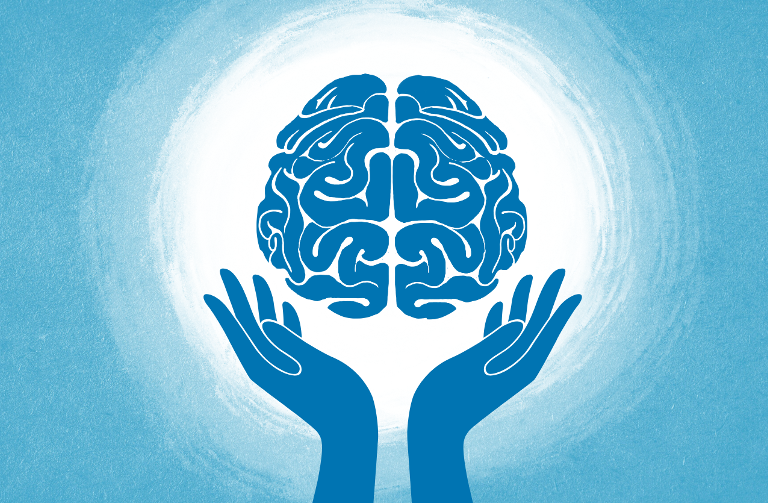As a young intersectional environmentalist I’ve come dangerously close to burnout multiple times, and I know I’m not alone. I think any one of us who’s aware of, involved in, and impacted by today’s interconnected social and environmental crises can feel overwhelmed, overworked, and overrun. Environmental psychology offers practices we can build into our daily lives that manage and restore a precious mental resource we all have: ‘directed attention’.
Directed attention is the ability to inhibit external distractions and internal mental noise in order to concentrate on what we would like to be thinking or doing in that moment. Though I’ll focus entirely on practical tips here, you can learn more about the concept of directed attention in part one of this two part article series. These practices aren’t a cure-all or a silver bullet, but they’ve helped me persist in this work, even through intensive learning, facing hard truths, and plenty of obstacles.
Practices for Managing Directed Attention
Choose the Right Environment
I love working in coffee shops, in theory. However, environments like cafes can be pretty distracting between the constant flow of people moving in and out, overlapping conversations, and the racket of the espresso machine. For work that requires deep focus, it’s worth choosing an environment that’s quiet, comfortable, distraction-free, and feels safe to you.
Identify Distractions
What’s pulling your attention away from your work? In a quiet environment, chances are it’s a device like your phone, or perhaps the presence of other people. For me, in order to get real work done my phone needs to be out of sight, out of reach, and ideally in another room because even the presence of a phone can be a distraction.
Don’t Try to Multitask
Research shows that true multitasking isn’t possible. What we think of as multitasking is actually just rapidly shifting attention between multiple tasks rather than doing those tasks simultaneously. We deplete directed attention not just while doing each task, but also to manage the rapid switching between tasks. This results in doing each of these tasks more poorly than if we were to work on and complete one task at a time, and it more quickly exhausts our limited store of directed attention.
Practices for Restoring Directed Attention
Though the above steps help delay and minimize it, directed attention fatigue is a normal and inevitable part of our work, even when that work is highly meaningful to us. Based on Stephen and Rachel Kaplan’s Attention Restoration Theory (ART), integrating the following restorative practices into your day-to-day routines can prevent burnout and promote long-term personal resilience.
Quiet Mental Noise
Our brains are incredible – they are constantly processing information and solving problems in the background. But when emotions, anxieties, and to-do’s are tugging at our mental capacities, it’s difficult to think clearly and be present. There are many different methods of quieting this mental noise. Here are a few possibilities:
- Address any leftover thoughts and check off easy to-do list items. For example, if I think of something I need to do later in the week, I’ll immediately add it to my calendar or jot it down on a sticky note so that it’s not lingering in the back of my mind.
- Try seeing a therapist for expert support in expressing and addressing personal struggles. Though it’s no replacement for professional help, talking to a close and trusted friend is another option for working through issues that weigh on your mind.
- Adopt regular mindfulness practices to clear and calm your mind – here are some you can do in just one minute.
Switch Between and Balance Tasks
In order to maintain your directed attention capacity, it’s essential to balance times of deep focus with rest – this balance should happen across your day, week, month, year, and even at higher timescales. To create this balance, you can change tasks relatively often, include unstructured time in your schedule, or organize your day according to when you tend to have the most mental vitality. This differs person to person, but many may find that earlier in the day or after a restorative activity are good times to do a task that requires lots of focus. You can also try building breaks into your day for micro-restoration – a short break could include a meditation session or walk outside.
Spend Time in Restorative Environments
There are several characteristics that make certain environments more attentionally restorative than others. These include: ability to generate ‘soft fascination’, providing a sense of being away, offering extent and an opportunity for exploration, and providing compatibility with your intentions.
Fascination is an involuntary form of attention; fascinating environments capture your attention, without any effort on your part. Environments that provide soft fascination lightly hold your attention, but do not grip it or monopolize it. This allows for contemplation and reflection, which can calm your mental noise and be especially restorative. My go-to soft fascination environment is a nearby park where the bird song, soft breeze through the trees, and swimming turtles create an environment that is just fascinating enough that I’m able to stay present, but also think deeply.
The sense of being away is fairly intuitive– you know it when you feel it. This can include both being away physically (on vacation or in a new place) or in a more conceptual sense (such as seeing a familiar environment in a new light).
Relatedly, environments that have extent give you the sense of being in another world. This extent must strike a balance by both giving you plenty to explore while also providing the safety to so without too much restriction, or the need to navigate or problem-solve. Like being away, the experience of extent can happen in the physical world or in an internal, mental landscape. Greenways along rivers often provide this for me– there’s always something new to explore around the next bend of the river, while river trails (and the river itself) provide a sense of security by keeping me oriented.
Finally, compatibility means that the environment matches your intentions, making it easier for you to pursue your purpose for being there. In this space, whatever feels natural and comfortable to you will also be the appropriate thing to do.
As my examples suggest, nature is a good place to start when seeking these four qualities. There is a whole body of research that demonstrates how being in nature, and natural elements such as a view of a tree from a window, pictures of nature, and even houseplants, can have restorative benefits. This isn’t to say that all natural settings are restorative, or that an environment must be natural in order to be restorative. Moreover, what you do in the environment matters when it comes to restoring your directed attention. For example, listening to a podcast or talking with a friend while walking through a park have their own benefits, but they’re not as restorative to your attention as walking in silence.
An important caveat: Deeply entrenched power structures such as white supremacy, patriarchy, ableism, and other discriminatory systems mean that theoretically restorative environments may still be unsafe and harmful to people with marginalized identities. For example, an evening walk through a tree-lined neighborhood may be restorative for white, cisgender men, but unsafe (and certainly not restorative) for Black men, women, and trans people.
In Conclusion…
Like any other practices, the above steps require repetition, dedication, and personalization in order to reap both short- and long-term benefits. If you give them a try, consider recording observations as you learn about your unique distractions and restorative environments. Doing so will help make good habits stick.
There will always be distractions and those trying to capitalize on our limited store of attention, but there are concrete practices available to us for regaining some agency. adrienne maree brown says “what we pay attention to grows”. I think this sentiment encapsulates the potential power of expanding our understanding of directed attention. Perhaps these words can be your invitation to hone your attentional management and restoration practices, to reclaim and redirect your attention to what you believe should grow.
—
Many thanks to Dr. Ray De Young, Clara Winter, Rob Dietz, and Amy Buringrud for your thoughtful input and editing of this article.






